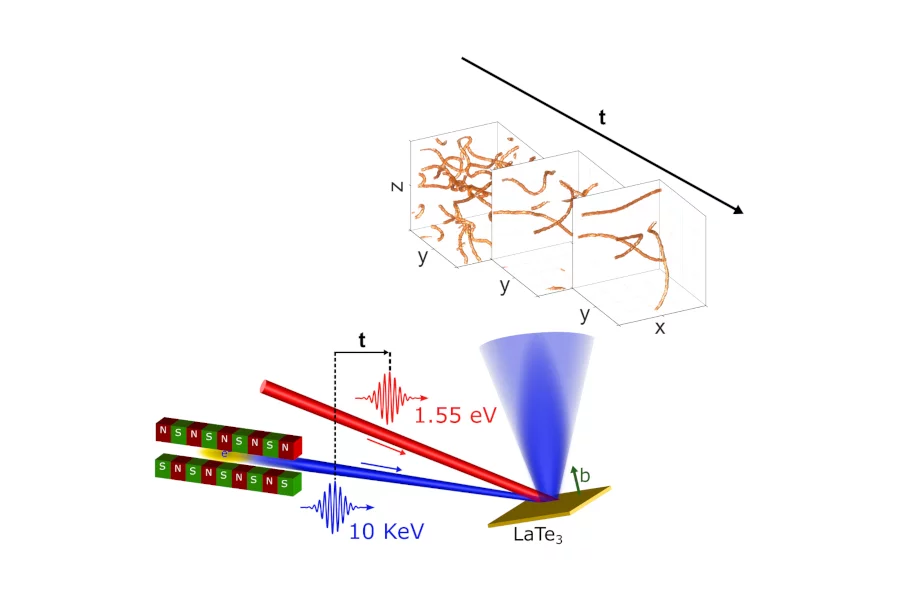Total scattering signals collected at SwissFEL reveal the role of topological defects when switching properties of a charge density wave material. The defect formation and dynamics after laser excitation reveals new insights into the functionality of quantum materials.
Contact
Dr. Henrik Till Lemke
Group Leader Bernina
Paul Scherrer Institute PSI
+41 56 310 49 82
henrik.lemke@psi.ch
Original Publication
Dynamical Scaling Reveals Topological Defects and Anomalous Evolution of a Photoinduced Phase Transition.
Orenstein, G., Duncan, R. A., de la Peña Muñoz, G. A., Huang, Y., Krapivin, V., Le Nguyen, Q., Teitelbaum, S., Singh, A. G., Mankowsky, R., Lemke, H., Sander, M., Deng, Y., Arrell, C., Fisher, I. R., Reis, D. A., & Trigo, M. (2025).
Physical Review X, 15(3), 031058.
https://doi.org/10.1103/w9v5-rwjr
